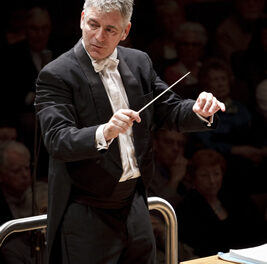Virtual learning for adults has flourished during the COVID-19 Pandemic, and Jazz Ambassadors: Jazz Exploration Workshop Series with Dr. Kelsey Klotz of UNC Charlotte stands out as one of the interesting interdisciplinary opportunities found on my screen. The time period was 1956-1978; and the most frequently mentioned artists were Louis Armstrong, Dave Brubeck, Duke Ellington, Dizzy Gillespie, and Benny Goodman. But there were many other artists who represented the U.S. during this period; among them Stan Getz, Earl Hines, Charles Mingus, and Randy Weston. Like a grand prix driver, Klotz skillfully steered us through the rich history of jazz diplomacy during the Cold War. It was a moment in time for jazz history and a blink in the history of modern times, but the stories were rich and compelling; and the cast of characters colorful. The workshop was offered by JazzArts Charlotte in four weekly online sessions.
Sandwiched between a packed overview on Session 1, and a memorable video of Dave Brubeck improvising on a Russian theme, Klotz filled the hours with film clips, music recordings, anecdotes, and modern political history. So much of this history had gone practically unnoticed during my life while ducking under a school desk! (BTW: which was where children would avoid the inevitable atomic bomb). Here are few of the highlights.
One of the pet projects of the Eisenhower Administration (1955-1961) was cultural diplomacy. Representative Adam Clayton Powell, Jr. from Harlem pushed vigorously for jazz diplomats. By the 1950s, jazz was recognized as a respectable art form, unique to America and a symbol of democracy. Who would be better suited to the job than Louis Armstrong? Later to be known as Ambassador Satch (short for his nickname Satchmo), he was likeable, an elite performer, and synonymous with American jazz. Armstrong was one of the State Department favorites. He had also taken a very successful, but unofficial (not supported by the US State Department) trip to Ghana in 1956. Meanwhile, and not surprisingly, critics at home objected to the public arts spending. There was also the problem of the civil rights struggle.
Armstrong backed out of a trip to Moscow when Eisenhower sat on his hands about the Little Rock School Crisis in 1957. Furious, Ambassador Satch spewed choice words about the terrible circumstances. Eisenhower sent in the National Guard. Was it Armstrong’s response or was it the telegram sent by Martin Luther King, Jr. that turned the tide? Perhaps both. Racism in this country never looks pretty.
There were other outspoken critics who toured for the U.S. Gillespie, for example, skipped out on the required briefings. There were the usual behaviors one might expect; Weston (who later moved to Morocco) and his fellow players wore Dashikis instead of the expected suits and ties. On many tours, band members ignored the rules by playing for the common people while off-duty. On the other hand, the US State Department did not always nail down details. There were incidents of passengers going the wrong direction, baggage lost, drums not showing up, and missing pianos; not to mention travel by cargo plane and narrow escapes from coups. Despite these issues, jazz musicians had the opportunity to tour the world.
Africa was a favored tour destination, especially for Black musicians who considered it an ancestral home. The First World Festival of Negro Arts (1966) in Dakar, Senegal featured some 2,000 writers, dancers, visual artists and musicians from 45 countries. The spectacular event was intended to highlight exceptional art and stimulate interest in the African diaspora. The festival also fortified jazz players (and others) to apply for tours. Serious readers may wish to read about William Greaves‘ official documentary.
Duke Ellington featured prominently as a successful African American jazz ambassador. The consummate gentleman, Ellington got along with everyone, toured many times, and though his music was considered somewhat passé, his audiences always enjoyed his performances. He was very gracious, never dominating the stage and he offered solos to his well-known, excellent players. Inspired by his travels and the people he met, Ellington jumped on the world music bandwagon without appropriating the music of other cultures. His 1962 piece, “Little African Flower” is remembered as one of the early examples of cross-pollination.
So just who were the real ambassadors during the Cold War? Dave Brubeck and his wife, Iola addressed the question in their collaboration, The Real Ambassadors. The musical was recorded in 1961 and performed for the Monterey Jazz Festival in 1962 where it was well received. Armstrong and Carmen Mc Rae played the leads, and jazz singing ensemble Lambert, Hendricks, and Ross sang the choruses. For some, including Brubeck, much of the show was a satire on the diplomatic efforts of the U.S. State Department. For Armstrong, it was not so humorous. Following “They Say I Look like God” he had tears in his eyes. The Real Ambassadors was not the Broadway hit the Brubecks hoped for, but it will be remembered.
The workshop was stimulating, fast-paced and challenging. And for this interested listener, Klotz cracked open a door into a fascinating time in jazz history. It was an opportunity to dust off some old LPS. Like attending a graduate seminar, I felt the refreshing whiff of an intellectual breeze. I would have preferred a little more music listening time, but that was easy to supplement. Many thanks to those in attendance – very knowledgeable, and some professional players; to this excellent community resource, JazzArts Charlotte; and to our expert guide, Dr. Klotz.











